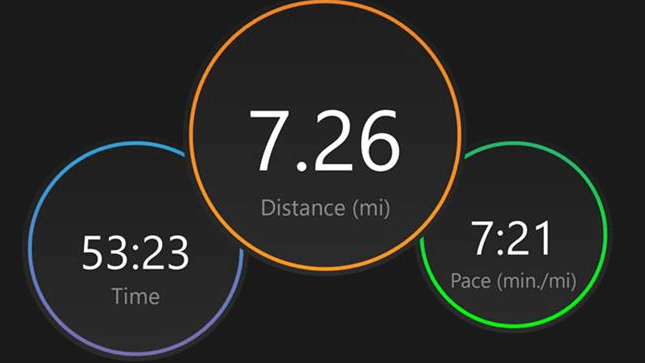Running For Time Or Distance: Which Approach Is Best?

It’s a constant debate in the running community. Should I structure my training around time or distance?
Our thought is…why not use both?
Both time and distance should play a role in your run training as long runs, speed work, intervals, and all sorts of training variations can be dependent upon a specific distance or time.
Plus, managing your Time on Feet (TOF) and preventing overtraining is an important practice, which means both time and distance will need to be factored in.
In our post below, we dive into the nuances of both approaches and when either one is best suited for your training. So, let’s dive in…
Quick Glance Time vs. Distance
Pros of Time
- Maintain your level of fitness
- Increases enjoyment
- Great for recovery days
Pros of Distance
- Builds motivation
- Adds intensity
- Gets you closer to specific mile goals
Benefits Of Running For Distance
If your goal is to train for a longer event like a half marathon, marathon, or ultra-marathon, running for distance is an important training practice.
Hitting a predetermined number of miles, consistently, over a period of weeks, will help you find a proper running pace and which will help you reach your race goals.
For example, if you’re a beginner who has signed up for a 5K or 10K, you’re going to want to understand what your running pace will be, especially if your race goal is more than completion.
To calculate your running pace, review our Running Pace Chart here.
Disadvantages Of Running For Distance
Always running for distance can make it tempting to maintain a specific pace the entire time, most often your target race pace. This makes it easy to overtrain and risk injury.
Experienced runners understand that distance training must be matched with a varying pace or intensity so that you don’t risk burnout.
Also, depending on your fitness level, running longer distances than you’ve rarely achieved before can be very risky. Long-distance running should be planned out.
And as always, we recommend working with a running coach to ensure your training program fits you properly.
How Do I Run For Distance?
To get started running for distance, we recommend focusing on the planning and preparation ahead of time.
First, map out your distance training so that you add a manageable amount of miles each week.
This is where to 10% Rule comes into play, so be sure to read our article; The 10 Percent Rule: What It Is & How To Use It

Put short, you shouldn’t be adding more than 10% to your mileage each week.
You should find it motivating to see your mileage increase.
Second, ensure that your long runs vary in intensity. You’ll find that your V02 Max improves over time if you add bursts of speed after a number of minutes.
If you’re not training for anything, and choose to do a steady-state run, we recommend running at RPE (Rate of Perceived Exertion) 3 or 4. A pace at which you can still carry on a conversation.
The importance of adding intervals to your long-distance runs cannot be understated here. You won’t see much race pace improvement if you don’t train at your lactate threshold, which makes your body more energy efficient.
Benefits Of Running For Time
There are multiple benefits of running for time.
First, it’s an easy way to maintain your run training within your schedule when it’s a timed run, slotted in between calendar events.
In your mind, you’re focused on finishing rather than pace, which means you’ll feel accomplished at the end of your run.

Second, when training for distance, runners often compare themselves to others, checking their pace and time goals. The instruction “run for 30 minutes”, is a straightforward training plan for the day that does not give any expectation of how far or how fast you should go.
One great example is ultra-runners who are setting themselves up to be on their feet anywhere from 30 to 100 miles. Time on your feet is often more important than how far you are running.
The third benefit is a reduction in injury risk when running in adverse conditions. Take for instance very hot summer days. Pushing yourself to hit a specific distance during risky conditions can have disastrous effects.
Instead, picking a time and sticking to it will help you mentally meet your training goal while preventing injury or illness.
And remember, research shows that just 5 minutes of running each day can reduce your risk of cardiovascular disease.
Disadvantages Of Running For Time
Hitting time goals is great, but it’s easy to fall into the trap of time being the only goal.
It’s going to be hard to see improvements in things like V02 Max, lactate threshold, recovery time, even the amount of time you can maintain your race pace when all you do is focus on meeting time goals.
Similar to varying distances and intensity, by varying your time you’ll begin to improve your speed, strength, and endurance.
How Do I Run For Time?
There are two overarching types of runs you should consider when running for time.
First is the steady-state run. By picking a pace for the entirety of your run (25-30 minutes), you’ll help build endurance. Be sure to include a solid warmup and cooldown though.
The second is the tempo run. Similar to the steady-state run, your tempo run should be a fairly hard pace but for a shorter period of time (10-20 minutes). The remaining pace of your timed run can be a cool 2-3 on the RPE Scale.
So, what’s better? Time or distance?
This coach and avid runner believes that there is a time and place for both.
The real question is what goals you’ve established for yourself and what fitness level you’re currently at.
If weight loss is your goal, a consistent low-intensity fast jog for 30-60 minutes each day will ensure your body has enough oxygen to burn fat.
If a specific race distance has to be met, then distance during your run training is likely where you’ll focus your time and attention.
And if you have a target race time in mind, a combination of time and distance will be needed to ensure you train properly.
But, like anything, there isn’t a one-size-fits-all answer.
Any good run training program will combine strategies to fit your needs and goals. So when in doubt, seek professional advice from a certified run coach.
You’ll find multiple coaches in our community RunnerClick Pro. Join today!
Latest Articles
 Is Running on a Treadmill Easier Than Running Outside?Runners have their own preferences, whether it is treadmill running, running outside on the road, or exploring trails. So...
Is Running on a Treadmill Easier Than Running Outside?Runners have their own preferences, whether it is treadmill running, running outside on the road, or exploring trails. So... Is It OK to Use Trail Running Shoes on the Road?While trail running shoes can be used on roads, especially in situations where a runner encounters mixed terrains or pref...
Is It OK to Use Trail Running Shoes on the Road?While trail running shoes can be used on roads, especially in situations where a runner encounters mixed terrains or pref... How to Fix Sore Quads After Running?Rest, ice, gentle stretching, and over-the-counter pain relievers can help soothe sore quads after running. Also, ensure ...
How to Fix Sore Quads After Running?Rest, ice, gentle stretching, and over-the-counter pain relievers can help soothe sore quads after running. Also, ensure ... 10 Fruits With The Most Electrolytes to Replace Sports DrinksThese fruits are high in electrolytes such as potassium, magnesium, and calcium, essential for hydration, muscle function...
10 Fruits With The Most Electrolytes to Replace Sports DrinksThese fruits are high in electrolytes such as potassium, magnesium, and calcium, essential for hydration, muscle function...

